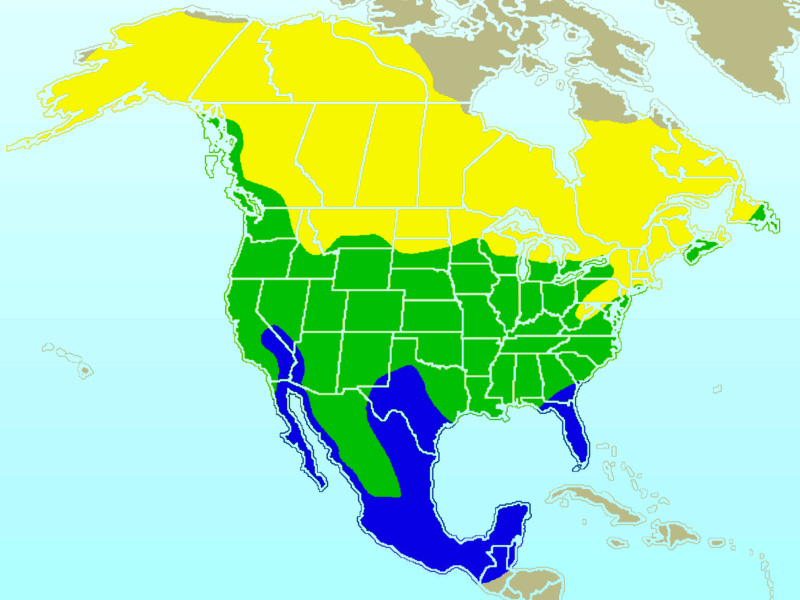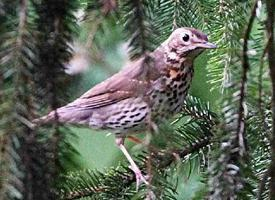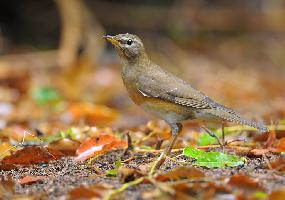
Greutăți și măsuri
| Lungime | de la 25 la 28 cm |
|---|---|
| Greutate | 77 g |
| Lungimea anvergurii aripilor | de la 31 la 41 cm |
Descrierea animalului
The American Robin, scientifically named Turdus migratorius, is a familiar and beloved sight across the vast landscapes of North America. Known for its distinctive orange-red breast and melodious song, this bird holds a special place in the hearts of many, often heralding the arrival of spring with its cheerful presence. With a range that spans from the northern reaches of Canada down to the southern parts of Mexico, the American Robin is among the most widespread and adaptable of North American birds.Physically, the American Robin is a medium-sized bird, typically measuring between 9 to 11 inches in length. Its most striking feature is undoubtedly its bright orange or red breast, which contrasts beautifully against its gray back and wings. The bird's head is often a darker shade of gray, and it has a white ring around its eye, giving it a distinct appearance. Both male and female robins share similar plumage, though males tend to have slightly brighter coloration. Young robins, known as fledglings, have a speckled breast, which they lose as they mature into their adult plumage.
One of the American Robin's most endearing qualities is its song. Known for its rich and melodious voice, the robin sings a series of cheerful notes that can be heard at the break of dawn and during the evening, making it one of the most vocal and recognized songbirds. Its diet is equally varied, consisting of a mix of invertebrates, such as worms and insects, and fruits. This varied diet allows it to thrive in a wide range of habitats, from dense forests and urban parks to suburban gardens.
The American Robin is a social bird, especially during the winter months when it forms large flocks to forage together. However, during the breeding season, robins become more territorial. They are known for their impressive nest-building skills, with the female constructing a sturdy nest made of grass, twigs, and mud in which to lay her eggs. Typically, a robin will lay a clutch of three to five light blue eggs, which she incubates for about two weeks before they hatch.
Robins play a significant role in various ecosystems. As consumers of a vast number of insects, they help control pest populations. Furthermore, their preference for fruits makes them important seed dispersers, contributing to the health and spread of many plant species.
Despite facing threats from habitat loss, pesticide use, and predation by domestic animals, the American Robin has managed to maintain robust populations, thanks in part to its adaptability and generalist lifestyle. It remains a common sight in many North American backyards, parks, and wild areas, continuing to captivate and inspire nature lovers with its beauty and song.
In conclusion, the American Robin is not just a bird; it's a symbol of the changing seasons and a reminder of the enduring beauty of the natural world. Its presence across the landscapes of North America serves as a testament to its adaptability and resilience, making it one of the continent's most beloved and iconic avian species.
Harta răspândirii

Animale similare
Fotografii noi cu animale
Top 10 animale
- Diana monkey (Cercopithecus diana)
- Dolphin gull (Leucophaeus scoresbii)
- Galápagos tortoise (Geochelone nigra complex)
- Moustached guenon (Cercopithecus cephus)
- Japanese spider crab (Macrocheira kaempferi)
- Colossal squid (Mesonychoteuthis hamiltoni)
- Fox tapeworm (Echinococcus multilocularis)
- Stone loach (Barbatula barbatula)
- Japanese macaque (Macaca fuscata)
- Barbary macaque (Macaca sylvanus)


